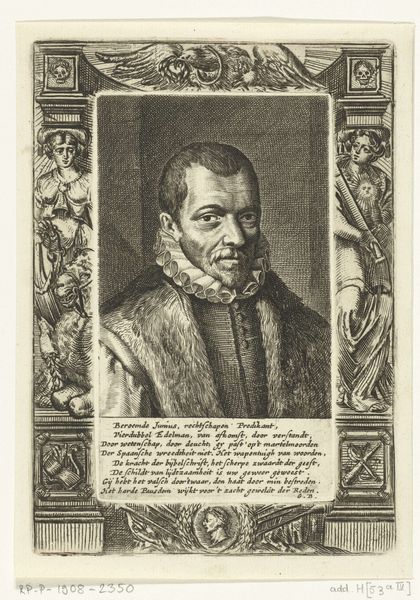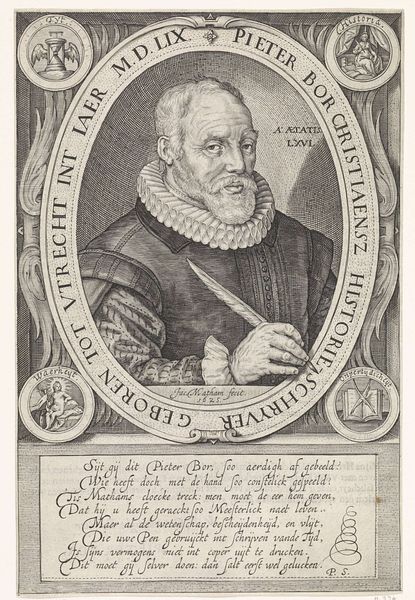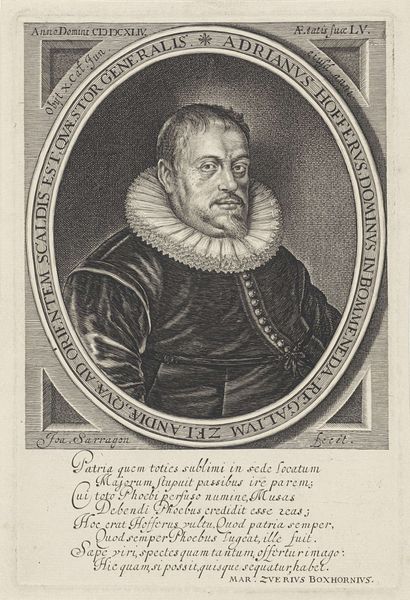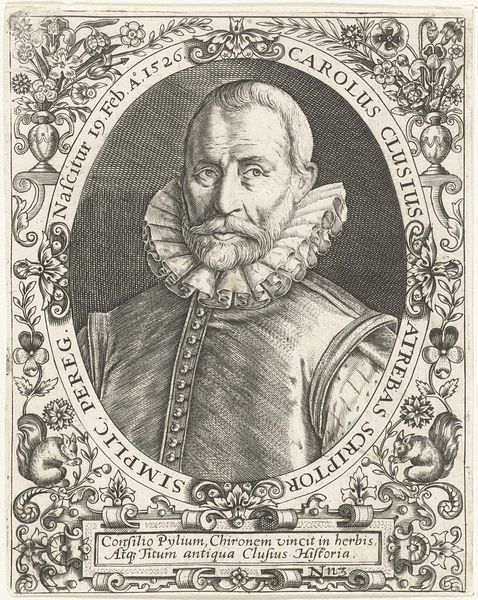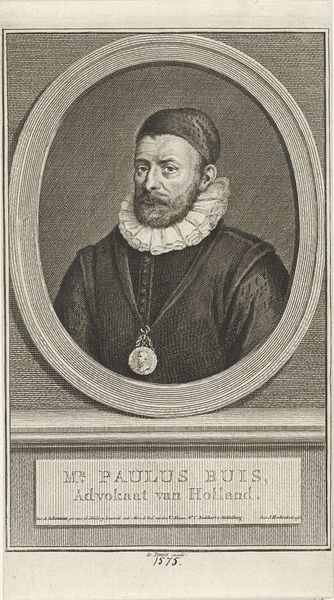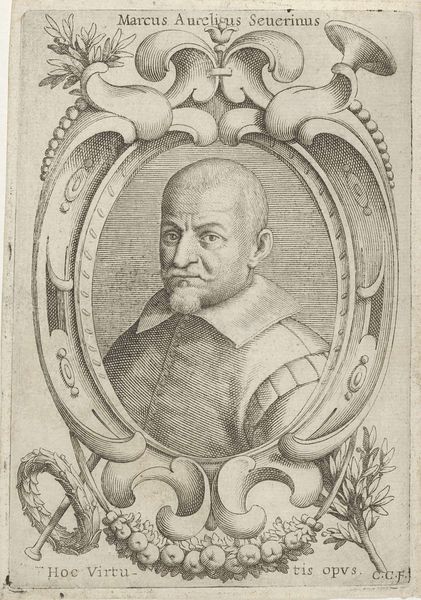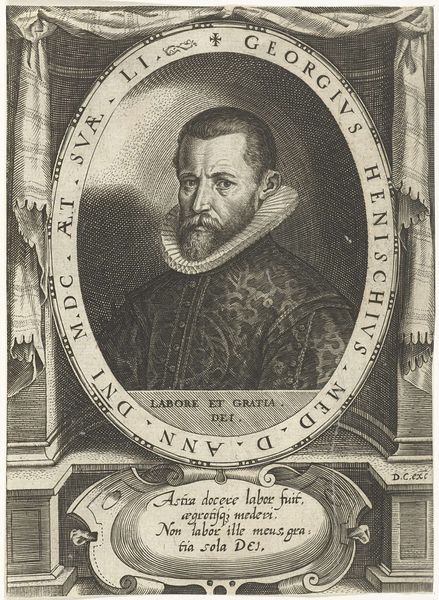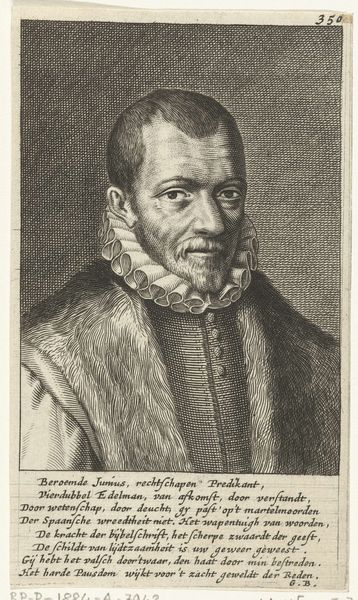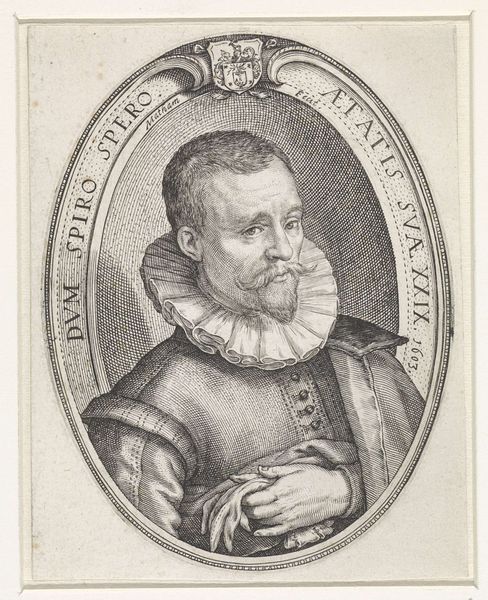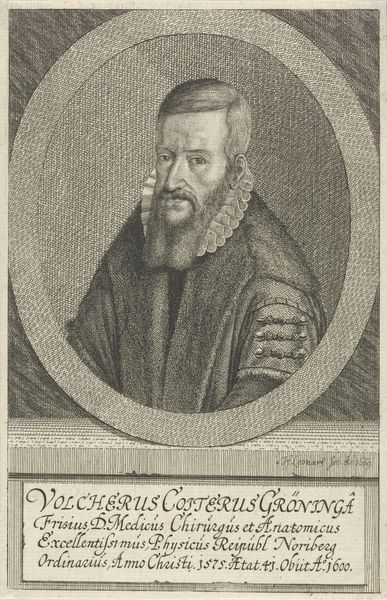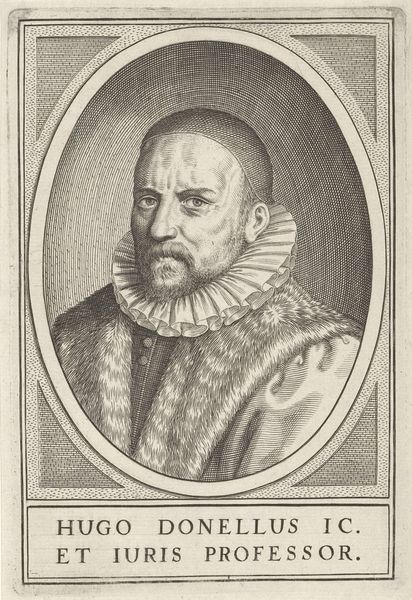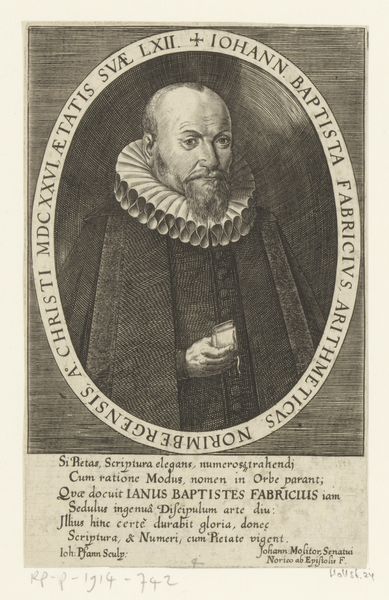
graphic-art, print, metal, engraving
#
portrait
#
graphic-art
#
baroque
#
dutch-golden-age
# print
#
metal
#
caricature
#
portrait reference
#
engraving
Dimensions: height 184 mm, width 125 mm
Copyright: Rijks Museum: Open Domain
Curator: This is a portrait of Franciscus Junius I, created sometime between 1696 and 1743 by Jan Lamsvelt. It's an engraving, using metal as the primary material. It resides at the Rijksmuseum. Editor: What strikes me first is the detail—those fine lines giving texture to his fur collar, the slight smile. It feels both formal and strangely intimate. Like he's about to share a secret. Curator: Absolutely. The artist, Lamsvelt, clearly mastered the engraving technique. Look at the varying line weights, used to create depth and shadow. Consider also how the Baroque style influences the composition with that oval wreath adding both classical dignity and dramatic flair. This wasn't simply about capturing likeness; it's about portraying status and virtue. Editor: Virtuous, perhaps, but there’s also something almost… knowing in his eyes. The high collar frames his face, making his gaze the focal point. I wonder about the labor involved—the painstaking hours spent etching each line, the potential for errors. Were these prints widely distributed, democratizing access to images of important figures? Curator: Good point! Prints did circulate widely. While wealthy patrons likely commissioned portraits like this, engravings allowed for broader dissemination of imagery, influencing public perceptions and solidifying social hierarchies. We need to think about the economics and politics embedded in these seemingly simple lines. What message was this particular Franciscus Junius trying to send, and how does the material medium reinforce it? Editor: Right, and I wonder how Junius himself felt about the process? Did he have any creative control? I picture him sitting stiffly for hours, while Lamsvelt meticulously transcribed his likeness. The exchange of power is very interesting, but you have to wonder whether this accurately represents his nature, and inner feelings. Curator: It is certainly staged to give a sense of status and the power in those times of his religion! The tools, the skill required, it speaks to the development of the printing press in that period of time. A lot more to unearth from those times, right? Editor: Definitely. A captivating face etched in time!
Comments
No comments
Be the first to comment and join the conversation on the ultimate creative platform.
